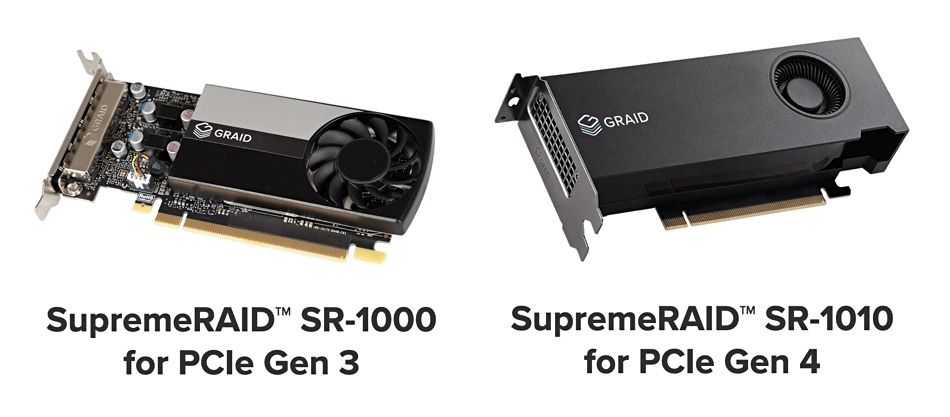GRAID (GPU-RAID) reckons it has an up to four-year lead over competitors like Broadcom and may agree to an acquisition if it could help it grow to the next level faster.
We have written about this fast-moving startup five times since October 2021, back when Gigabyte announced it was using GRAID Technology’s Supreme RAID card in a server. In April this year GRAID announced its SupremeRAID SR-1010, claiming it to be the world’s fastest NVMe/NVMeoF RAID card. FMS 20222 gave us the opportunity to meet founder and CEO Leander Yu and we took advantage of that to find out more.

GRAID Technology was started up by Taipei-based Yu in December 2019. He had previously founded Taiwan-based software-defined storage company Bigtera in January 2014 with its VirtualStor product line. That company was bought by SSD controller supplier Silicon Motion in July 2017, and Silicon Motion itself was bought by MaxLinear in May 2022. The Bigtera acquisition provided GRAID startup cash to Yu. He started GRAID with $2.5 million in seed-level funding and there was a subsequent $15 million A-round, making a total of $17.5 million raised.
GRAID had the idea of using an Nvidia T1000 GPU to power its RAID card, thus bringing the graphics accelerator’s parallel processing to the RAID problem. But it went further and conceived the idea of supplying RAID protection to NVMe SSDs by writing its own NVMe controller software and having that talk to the PCIe-connected GPU-powered RAID card.
This enabled the GRAID SR-1000 PCIe 3 card, and its NVMe controller software running in a host system, to keep up with 24 x NVMe SSDs, or more; an ability not exhibited by traditional RAID cards, which max out with a couple of NVMe SSDs.

Software RAID could do the same work as a GRAID card but would take a large amount of host CPU cycles in the process. The GRAID card is effectively a GPU-powered RAID offload engine and its performance would appear to be impressive. The PCIe 4-supporting SR-1010 is said to deliver 19.4 million random read IOPS, 1.5 million random write IOPS, 110GB/sec of sequential read bandwidth, and 22GB/sec when sequentially writing.
Yu initially employed 5 to 6 software engineers and these programmers developed AI-powered and out-of-band code (out of the data path) that supports NVMe, and now NVME-oF-accessed, SSDs and provides RAID levels 0, 1, 5, 6, and 10. GRAID has grown its headcount to around 45 people.
He said that, because GRAID used Nvidia GPUs, “On day one we were ready to go in any country in the world Nvidia ships to.”
Yu’s company is said to be talking to server vendors such as Supermicro, Lenovo, HPE, ASC, Inspur and others because his software-driven card delivers performance from multiple NVMe SSDs that allows GRAID to match or exceed external all-flash array’s performance and have a price advantage. Yu said GRAID has multiple proof-of-concept designs in progress and mentioned there were conversations with other channel partners as well as the server vendors.
He said he started up GRAID to build a great company, “but we will get acquisition inquiries. We will see if being acquired will help us grow to the next level.”
Yu told us that RAID card competitors, such as Broadcom, have to develop software to match GRAID. He thinks this gives GRAID a three-to-four-year advantage, and asked rhetorically: “Why don’t they acquire us? It would be cheaper for them.”
Bootnote
The full company name is GRAID Technology. We refer to it as GRAID because that’s what people do. It has nothing whatsoever to do with Western Digital’s G-RAID products, which are external storage drives for consumers.








